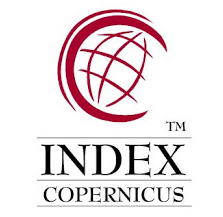Planejamento Estratégico de Marketing e a Construção da Credibilidade na Conexão com o Público
Strategic Marketing Planning and the Construction of Credibility in Connecting with the Public
DOI:
https://doi.org/10.51473/rcmos.v1i1.2022.1124Palavras-chave:
Marketing estratégico; Credibilidade; Planejamento; Conexão com o público; Branding.Resumo
O presente artigo analisa os fundamentos do marketing estratégico com foco na construção de credibilidade e conexão com o público-alvo. Partindo da premissa de que marcas fortes se sustentam na confiança que inspiram, o texto explora ferramentas e métodos de planejamento que contribuem para transmitir valores autênticos e consolidar uma imagem coerente. São discutidas técnicas de storytelling, definição de personas, funil de comunicação, mapeamento de jornada e recursos analíticos para sustentar a tomada de decisão baseada em dados. A pesquisa fundamentase em teorias clássicas e contemporâneas, com referências até 2021, fornecendo uma base sólida para profissionais e acadêmicos que desejam aprofundar a compreensão sobre o impacto do planejamento na construção de marcas confiáveis.
Downloads
Referências
ARGYRIS, Chris. Knowledge for Action: A Guide to Overcoming Barriers to Organizational Change. San Francisco: Jossey-Bass, 1999.
BITNER, Mary Jo; OSTROM, Amy L.; MORGAN, Forrest N. Service Blueprinting: A Practical Technique for Service Innovation. California Management Review, v. 50, n. 3, p. 66-94, 2008. DOI: https://doi.org/10.2307/41166446
CHAUDHURI, A.; HOLBROOK, M. B. The Chain of Effects from Brand Trust and Brand Affect to Brand Performance: The Role of Brand Loyalty. Journal of Marketing, v. 65, n. 2, p. 81–93, 2001. DOI: https://doi.org/10.1509/jmkg.65.2.81.18255
CHAFEEY, Dave; ELLIS-CHADWICK, Fiona. Digital Marketing: Strategy, Implementation and Practice. 5. ed. Harlow: Pearson Education, 2012.
COOPER, Alan. The Inmates Are Running the Asylum. Indianapolis: Sams Publishing, 1999. DOI: https://doi.org/10.1007/978-3-322-99786-9_1
DAMASIO, Antonio R. O Erro de Descartes: Emoção, razão e o cérebro humano. São Paulo: Companhia das Letras, 1994.
DAVENPORT, Thomas H.; HARRIS, Jeanne G. Competing on Analytics: The New Science of Winning. Boston: Harvard Business School Press, 2007.
DRUCKER, Peter F. The Practice of Management. New York: Harper & Row, 2001.
EDELMAN, David C.; SINGER, Marc. Competing on Customer Journeys. Harvard Business Review, v. 93, n. 11, p. 88-100, 2015.
FARRIS, Paul W. et al. Marketing Metrics: The Definitive Guide to Measuring Marketing Performance. 2. ed. Upper Saddle River: Pearson Education, 2010.
FOMBRUN, Charles J. Reputation: Realizing Value from the Corporate Image. Boston: Harvard Business School Press, 1996.
GOBÉ, Marc. Emotional Branding: The New Paradigm for Connecting Brands to People. New York: Allworth Press, 2009.
HALLIGAN, Brian; SHAH, Dharmesh. Inbound Marketing: Get Found Using Google, Social Media, and Blogs. Indianapolis: Wiley, 2010. DOI: https://doi.org/10.1002/9781118257838
KAPFERER, Jean-Noël. The New Strategic Brand Management: Advanced Insights and Strategic Thinking. 5. ed. London: Kogan Page, 2008.
KAPLAN, Robert S.; NORTON, David P. The Balanced Scorecard: Translating Strategy into Action. Boston: Harvard Business School Press, 1996.
KOTLER, Philip; KARTAJAYA, Hermawan. Marketing 4.0: Moving from Traditional to Digital. Hoboken: Wiley, 2017.
KOTLER, Philip; KELLER, Kevin Lane. Marketing Management. 14. ed. Harlow: Pearson Education, 2012.
KERZNER, Harold. Project Management: A Systems Approach to Planning, Scheduling, and Controlling. 11. ed. Hoboken: Wiley, 2013.
LEMON, Katherine N.; VERHOEF, Peter C. Understanding Customer Experience Throughout the Customer Journey. Journal of Marketing, v. 80, n. 6, p. 69-96, 2016. DOI: https://doi.org/10.1509/jm.15.0420
MCCARTHY, E. Jerome; PERREAULT, William D. Basic Marketing: A Managerial Approach. 14. ed. New York: McGraw-Hill, 2010.
MINTZBERG, Henry. The Rise and Fall of Strategic Planning. New York: Free Press, 1994.
PERA, Roberto et al. Consumer Brand Relationships: Theory and Practice. Journal of Business Research, v. 69, n. 1, p. 553-560, 2016.
PULIZZI, Joe. Epic Content Marketing: How to Tell a Different Story, Break through the Clutter, and Win More Customers by Marketing Less. New York: McGraw-Hill, 2014.
RAWLINS, Brad. Give the Emperor a Mirror: Toward Developing a Stakeholder Measurement of Organizational Transparency. Journal of Public Relations Research, v. 20, n. 1, p. 71-99, 2008. DOI: https://doi.org/10.1080/10627260802153421
RAWSON, Alex; DUNCAN, Ewan; JONES, Conor. The truth about customer experience. Harvard Business Review, v. 91, n. 9, p. 90-98, 2013.
REVELLA, Adele. Buyer Personas: How to Gain Insight into your Customer’s Expectations, Align your Marketing Strategies, and Win More Business. Hoboken: Wiley, 2015.
RIES, Al; TROUT, Jack. Positioning: The Battle for Your Mind. New York: McGraw-Hill, 2001.
RUST, Roland T.; ZEITHAML, Valarie A.; LEMON, Katherine N. Driving Customer Equity: How Customer Lifetime Value is Reshaping Corporate Strategy. New York: Free Press, 2004.
TEECE, David J.; PETERAF, Margaret A.; LEIH, Sebastian. Dynamic Capabilities and Organizational Agility: Risk, Uncertainty, and Strategy in the Innovation Economy. California Management Review, v. 58, n. 4, p. 13-35, 2016. DOI: https://doi.org/10.1525/cmr.2016.58.4.13
VERHOEF, Peter C. et al. Customer Experience Creation: Determinants, Dynamics and Management Strategies. Journal of Retailing, v. 85, n. 1, p. 31-41, 2009. DOI: https://doi.org/10.1016/j.jretai.2008.11.001
Downloads
Arquivos adicionais
Publicado
Edição
Seção
Categorias
Licença
Copyright (c) 2022 Luana da Costa Ribeiro de Mattos (Autor)

Este trabalho está licenciado sob uma licença Creative Commons Attribution 4.0 International License.
Este trabalho está licenciado sob a Licença Creative Commons Atribuição 4.0 Internacional (CC BY 4.0). Isso significa que você tem a liberdade de:
- Compartilhar — copiar e redistribuir o material em qualquer meio ou formato.
- Adaptar — remixar, transformar e construir sobre o material para qualquer propósito, inclusive comercial.
O uso deste material está condicionado à atribuição apropriada ao(s) autor(es) original(is), fornecendo um link para a licença, e indicando se foram feitas alterações. A licença não exige permissão do autor ou da editora, desde que seguidas estas condições.
A logomarca da licença Creative Commons é exibida de maneira permanente no rodapé da revista.
Os direitos autorais do manuscrito podem ser retidos pelos autores sem restrições e solicitados a qualquer momento, mesmo após a publicação na revista.

















